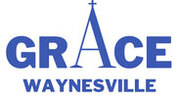Reading the Gospels During Lent 2023
The Mountaineer, Waynesville NC
Published February 17, 2017
How to make Easter meaningful this year
Rev. Richard Ploch
During an interview, Pulitzer Prize winning author David McCullough was asked what we must do to better understand history. Go to the places where history happened, he said. Walk the battle fields of Gettysburg and the sands of Kitty Hawk where Orville and Wilbur flew into the air. Go to Cherokee and listen to the stories of our native neighbors. Visit Washington D.C.
He then said we must read primary sources: Rachel Carson’s “Silent Spring,” the Constitution of the United States, letters written by our family members.
Today begins Lent, the holiest season of the Christian year. Forty days (plus Sundays) to reflect on our lives and pray in honest repentance in preparation for the glory of Easter morning on April 16. While it is good to abstain from sweets or excessive television with the intention of drawing closer to God, it’s even more helpful to follow the advice of McCullough and visit the places where the story of the Bible happened, Israel, or where it is told, our churches. We must also read the original source, the Bible.
To visit the Holy Land is a challenge but not impossible. Don’t let fear hold you back; it’s safer there than in much of America. After you get through the Newark airport and climb on an El Al flight, it’s secure the rest of the way. The land of the Bible is often called the Fifth Gospel, and a visit is an essential pilgrimage, especially for those who preach.
Church attendance is also vital. A clear majority of Americans call ourselves Christian, but fewer than half of us attend regularly and even fewer participate in Bible studies.
Put yourself in a pew between now and Easter, and then consider this Lenten obligation. A few years ago, I began the annual promise to read through the four Gospels during these 40 days. It’s two or three chapters a day requiring only 20 minutes of time. Choose the readable translation of your choice with the goal of actually doing the reading. Light a candle and turn off the noisy television. Then when you encounter a passage in a devotional or at church, you have a context for understanding.
The 40 days will pass whether or not you read, but if you do, you can then look at yourself and say, “I did it. I actually read the story for myself, something I’ve long wanted to do.”
A reading plan (a PDF file which you can print and tuck into your Bible) is available here.
Published February 17, 2017
How to make Easter meaningful this year
Rev. Richard Ploch
During an interview, Pulitzer Prize winning author David McCullough was asked what we must do to better understand history. Go to the places where history happened, he said. Walk the battle fields of Gettysburg and the sands of Kitty Hawk where Orville and Wilbur flew into the air. Go to Cherokee and listen to the stories of our native neighbors. Visit Washington D.C.
He then said we must read primary sources: Rachel Carson’s “Silent Spring,” the Constitution of the United States, letters written by our family members.
Today begins Lent, the holiest season of the Christian year. Forty days (plus Sundays) to reflect on our lives and pray in honest repentance in preparation for the glory of Easter morning on April 16. While it is good to abstain from sweets or excessive television with the intention of drawing closer to God, it’s even more helpful to follow the advice of McCullough and visit the places where the story of the Bible happened, Israel, or where it is told, our churches. We must also read the original source, the Bible.
To visit the Holy Land is a challenge but not impossible. Don’t let fear hold you back; it’s safer there than in much of America. After you get through the Newark airport and climb on an El Al flight, it’s secure the rest of the way. The land of the Bible is often called the Fifth Gospel, and a visit is an essential pilgrimage, especially for those who preach.
Church attendance is also vital. A clear majority of Americans call ourselves Christian, but fewer than half of us attend regularly and even fewer participate in Bible studies.
Put yourself in a pew between now and Easter, and then consider this Lenten obligation. A few years ago, I began the annual promise to read through the four Gospels during these 40 days. It’s two or three chapters a day requiring only 20 minutes of time. Choose the readable translation of your choice with the goal of actually doing the reading. Light a candle and turn off the noisy television. Then when you encounter a passage in a devotional or at church, you have a context for understanding.
The 40 days will pass whether or not you read, but if you do, you can then look at yourself and say, “I did it. I actually read the story for myself, something I’ve long wanted to do.”
A reading plan (a PDF file which you can print and tuck into your Bible) is available here.
|
Worship Times
Sunday 8:00am in person and live stream 9:15am Adult formation in person and on Zoom 10:30am in person Taizé Service - 1st Sundays @ 7:00 pm Wednesday 12:00 pm Eucharist + Healing Service |
Grace Church in the Mountains
394 N. Haywood Street, Waynesville, North Carolina 28786 • Phone: (828) 456-6029 Email: admin@gracewaynesville.com
Pastoral Emergency: (828)558-0246
394 N. Haywood Street, Waynesville, North Carolina 28786 • Phone: (828) 456-6029 Email: admin@gracewaynesville.com
Pastoral Emergency: (828)558-0246

